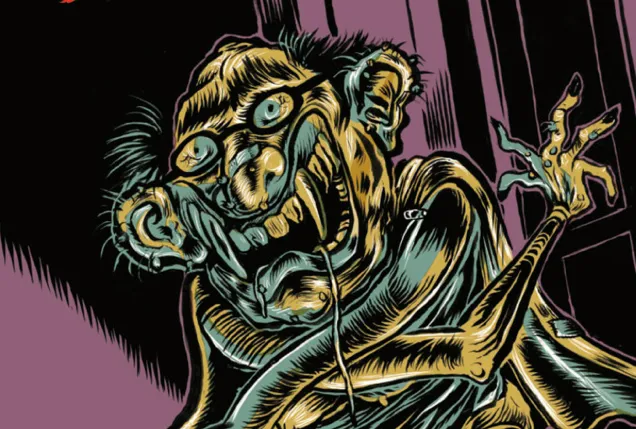Table of Contents
These past weeks, marred by a deadly shooting, the New York Times’ cartoon, and hundreds of rockets launched against Israeli civilians, have been incredibly difficult for the Jewish people. At Stanford, they are set to culminate in Palestine Awareness Week (not-so-coincidentally scheduled concurrently with Yom Ha’atzmaut, or Israeli Independence Day). In an attempt to raise awareness for their featured speaker, controversial cartoonist Eli Valley, Students for Justice in Palestine (SJP) and Jewish Voice for Peace (JVP) distributed some of Eli Valley’s cartoons in Stanford dorms.
These cartoons, caricaturing Jews as “giant reptiles” and including controversial representations of “Jewish values,” were posted around Stanford. After an outpouring of distress from the Jewish community, SJP removed them and issued and an apology, but Valley is still slated to speak on Friday, accompanied by a public exhibition of his work.
Valley’s other drawings, however, utilize a vocabulary of caricature so charged with anti-Semitism that no political pretense could justify a public display. In addition to the traditional tropes of enlarged noses and curls, Valley depicts Jews with fangs and blood, eerily reminiscent of the “blood libel,” responsible for the death of thousands. Granted, Valley is a Jewish artist. Yet, his graphic depiction of a Jew simultaneously raping a Christian and a Muslim, or of Holocaust survivor Elie Wiesel as a puppet used by Jews to validate terrorism towards Palestinians by strapping his head to a rocket, are shamefully degrading regardless of personal background. Although Valley assures us that his work is “emphatically anti-Nazi” and merely makes pointed political remarks, his choice to depict Jews in a manner so charged with traditionally racist imagery goes well beyond merely criticizing Israeli politics. Let’s face it: if he has even gone as far as to compare attending Synagogue as a child to the imprisonment of Holocaust victim Anne Frank, one questions how affectionate his relationship to Judaism really is.
Stanford’s campus is no stranger to anti-Semitism. In addition to the dozen swastikas graffitied on Stanford’s campus over the past four years, and the former ASSU senator who endorsed an anti-Semitic conspiracy theory, anti-Israel sentiment has often spilled over into anti-Semitic behavior. Most recently, an RA was fired when it was discovered that he had threatened physical violence against Zionist students. The ASSU has passed BDS (Boycott Divestment and Sanctions) resolutions against Israel, which the Anti-Defamation League condemns as anti-Semitic. Two years ago, Stanford’s Students for Justice in Palestine invited the son and avid apologist for a Palestinian terrorist and murderer to speak on campus. All this in the name of “anti-Zionism.”
Outside the Jewish community, these events arouse outrage only when it suits political interests. The frustration over Dinesh D’Souza’s invitation was justified. But it beggars belief that D’Souza, who accidentally retweeted an anti-Semitic hashtag and subsequently apologized, sparked mass protests, while Valley, who unapologetically creates drawings which include blatantly anti-Semitic symbolism sparks none.
If, as the event organizers claim, there is any semantic distinction between anti-Semitism and anti-Zionism, this most recent in a string of events makes any such distinction a moot point. Can one honestly look at the events which have taken place at Stanford alone, and say that there are no similarities between anti-Zionist tactics and anti-Semitic propaganda?
It would be inappropriate for the university administration to force SJP to disinvite Valley, given students’ right to freedom of speech. However, students attending this event should not be fooled by the seemingly innocuous name “Palestine Awareness Week.” Any “artist” whose work utilizes such degrading and racist stereotypes should be viewed as such by the student body. If these same cartoons utilized blackface and racist Jim Crow-era imagery to caricature issues in the black community, Stanford would be in uproar -- and rightfully so. That students are so eager to embrace equivalently racially charged strategies and have the gall to excuse such behavior as “anti-Zionism” is a disgrace to this campus.









